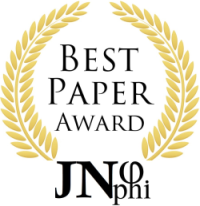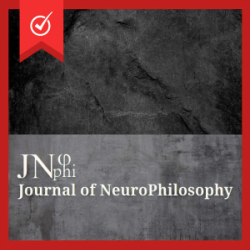Beyond Res Potentia and Res Extensa: Toward Res Exclusia — The Ontological Space of Consciousness
One of the most ontologically revolutionary consequences of quantum theory was the reintroduction—after more than two millennia—of possibility as a fundamental category of being. In classical physics, the real was equated with the actual, and potentiality was relegated to epistemic ignorance: what was “possible” simply marked what was not yet known. With the advent of quantum mechanics, however, Werner Heisenberg proposed a radically different view. Drawing from Aristotle’s notion of dynamis or potentia, Heisenberg suggested that quantum entities—wavefunctions—should not be seen as mere probabilities in an observer’s mind, but as ontological potentiae, real potentialities that precede and condition actuality.
This idea—at once metaphysical and empirically grounded—has since reemerged in various interpretations of quantum mechanics seeking to account for the deep ontological implications of quantum formalism. Among the most sophisticated of these are Ruth E. Kastner’s Relativistic Transactional Interpretation (RTI) and its possibilist extension (PTI), both of which develop Heisenberg’s insight into a rigorous dual ontology. In this framework, quantum states exist not in spacetime but in an extraspatiotemporal domain of possibilities—a realm as real as spacetime itself, yet nonlocal, acausal, and pre-empirical. As Kastner, Kauffman, and Epperson write in their paper Taking Heisenberg’s Potentia Seriously: “This new ontological picture requires that we expand our concept of ‘what is real’ to include an extraspatiotemporal domain of quantum possibility.”
From Dual to Triadic OntologyKastner and colleagues identify two fundamental ontological categories:
-
Res Extensa — the four-dimensional spacetime continuum described by Einstein’s general relativity, the domain of actualized events and determinate outcomes.
-
Res Potentia — the nonlocal Hilbert-space domain of pure potentialities, corresponding to Heisenberg’s potentiae, where quantum states exist as superpositions of possible outcomes.
In their interaction, actuality emerges from potentiality: spacetime crystallizes out of the Hilbert-space of possibilities through quantum measurement—the so-called “actualization of potential.” Yet this dual framework, while powerful, leaves open a profound ontological question: what happens to the unactualized aspects of potentiality once an outcome becomes actual? When the wave function collapses, where do the “excluded” potentials go?
To address this, we introduce a third ontological category—a complement to Res Potentia and Res Extensa—that we may call Res Exclusia. Whereas Res Potentia represents potentiality-before-actualization and Res Extensa the domain of actualized events, Res Exclusia denotes the state of annihilated possibilities—those quantum alternatives that are negated through measurement. It represents an ontological field of exclusion, in which the non-realized possibilities continue to exist, but in a purely phenomenal or non-physical mode.
Res Exclusia: The Ontological Space of Quantum ExclusionsThe quantum exclusion state, or Res Exclusia, can be conceived as the complement of both potential and actual states. If Res Potentia corresponds to the superposition of all possible spacetime outcomes, Res Exclusia corresponds to the nullification of those outcomes in the act of measurement—the shadow of actualization. Each quantum measurement does not merely “select” an outcome but also excludes an infinity of alternatives; these excluded possibilities, rather than vanishing, transition into a different ontological register—one devoid of physical properties but retaining phenomenological presence.
In this view, Res Exclusia forms an extraspatiotemporal domain of phenomenal residues—a vast field of unactualized but ontologically real exclusions. Metaphorically, one might say that each event in Res Extensa leaves behind a spectral trail in Res Exclusia: for every physical actualization, there exist N phenomenal exclusions, ghostly vestiges of a shared quantum past.
This conception bears resemblance to the Everettian “many-worlds” interpretation, but with a crucial difference: the branches in Res Exclusia are not parallel physical universes but phenomenal counterfactuals—ghostly, unmaterialized traces devoid of physical parameters such as energy or momentum. They are “branches” only in the sense that they represent the network of possibilities excluded by actualization, now existing in a purely phenomenal, consciousness-related mode.
Phenomenal-Physical Parallelism and ConsciousnessIf each actualized spacetime event (in Res Extensa) corresponds to a multiplicity of phenomenal exclusions (in Res Exclusia), then a parallelism arises between the physical and the phenomenal: an N-to-1 relationship in which each physical event has an accompanying manifold of phenomenal “echoes.” These echoes are not causally effective in the classical sense but are nonlocally and globally correlated with the structure of physical reality.
Within Res Exclusia, integration among phenomenal histories—what might be termed the qualitative coherence of consciousness—is conceivable, since all such histories belong to the same ontological category. However, integration between Res Extensa and Res Exclusia is not ordinarily possible, given their categorical difference: the former is spatiotemporal and quantitative, the latter extraspatiotemporal and qualitative.
The crucial conjecture advanced here is that in highly integrated macrophysical systems such as the human brain, a temporary coupling between Res Extensa and Res Exclusia may occur. This coupling—an interface of actual and phenomenal domains—could explain the emergence of conscious experience and apparent volition. In this model, consciousness arises not from within spacetime but from the selective interaction between physical actualizations and phenomenal exclusions, forming a unique locus of bidirectional exchange.
Such interconnection, being energetically negligible but informationally profound, may confer evolutionary advantages: enhanced adaptability, predictive simulation, and self-referential modeling—all derived from transient synchronization between physical and phenomenal states.
Toward an Inverse EPR-Like MechanismA speculative extension of this model posits that inverse or “re-inverted” nonlocal EPR-like correlations could operate between Res Potentia and the twin domains of Res Extensa and Res Exclusia. In standard EPR correlations, entangled systems exhibit nonlocal dependencies across spacetime. In the proposed “inverse” version, correlations might propagate from the domain of potentiality to the domains of actuality and exclusion, mediating the collapse and the bifurcation between realized and annihilated outcomes.
In such a framework, consciousness could be conceived as the subjective correlate of quantum exclusion—the experiential registration of what the universe itself has “ruled out.” This would align consciousness with the very frontier of actualization: the living interface where potentiality divides into actuality and exclusion. The self, then, becomes not the agent of experience but its boundary condition—the shimmering edge between being and non-being.
Conclusion: Consciousness as the Shadow of ActualizationThe introduction of Res Exclusia as a third ontological category expands the Heisenberg–Kastner dualism into a triadic ontology of existence:
-
Res Potentia — the realm of pre-actual potentiality;
-
Res Extensa — the realm of actualized spatiotemporal events;
-
Res Exclusia — the realm of excluded, phenomenal, non-physical outcomes.
Together, these three form a complete ontological cycle: potentiality → actuality → exclusion, mirroring the triadic structure of perception (anticipation → realization → reflection). Consciousness, in this view, is not an epiphenomenon of matter but the phenomenal trace of quantum exclusion—the universe’s way of knowing itself by what it negates.
Thus, the mind is not in the brain, but the brain is a local aperture through which the field of exclusions—Res Exclusia—glimpses its own potential for actualization. In the end, consciousness may not be a substance at all, but rather the echo of unrealized reality reverberating through the quantum silence that lies between worlds.
— Editorial Team, JNphi



